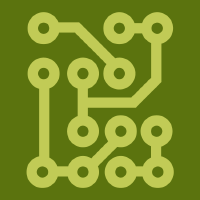Topic Menu
► Topic MenuTopic Editors


Quantum Information and Quantum Computing
Topic Information
Dear Colleagues,
Despite a few decades since the first ideas of quantum computing by Richard Feynman and Paul Benioff it has only recently attracted the attention of wider community including large technology companies such as Google, IBM, Microsoft, Amazon, and others. This resulted in an important milestone in the field such as the first demonstrations of quantum supremacy. Superconducting, photonic, solid-state, and trapped neutral atom and charged ion platforms are considered among the most promising approaches. However, there has been no clear winner so far since each approach has come with its own severe deficiency. It is a grand scientific and engineering problem to manufacture a large-scale quantum computer that can reliably process information to solve practical problems relevant to the real needs of the society.
Research that reports new advances that meaningfully contribute to the state-of-the-art quantum computing and current body of knowledge on quantum information is encouraged. This may include research on scalable manufacturing and quantum control of qubit systems, hybrid classical and quantum computing approaches, algorithms for noisy intermediate scale quantum computers, demonstrations of quantum advantage, novel materials, technology milestones in quantum networks and infrastructures, quantum fault-tolerance and noise, miniaturization, quantum imaging and sensing, quantum statistical learning, quantum information processes in biological systems, and foundations of quantum mechanics.
Another topic encouraged is the training of the quantum workforce for the highly demanding quantum information and quantum computing technologies.
Dr. Durdu Guney
Dr. David Petrosyan
Topic Editors
Keywords
- quantum supremacy
- superconducting quantum computing
- photonic quantum computing
- solid-state quantum computing
- trapped-ion quantum computing
- Rydberg-atom quantum computing and simulations
- scalable manufacturing of qubit systems
- scalable quantum control
- hybrid classical and quantum computing
- noisy intermediate scale quantum computers
- quantum communications
- quantum machine learning
- quantum imaging and sensing
- quantum biology
- fault-tolerant quantum computing
- quantum education
Participating Journals
| Journal Name | Impact Factor | CiteScore | Launched Year | First Decision (median) | APC |
|---|---|---|---|---|---|

Applied Sciences
|
2.5 | 5.3 | 2011 | 18.4 Days | CHF 2400 |

Electronics
|
2.6 | 5.3 | 2012 | 16.4 Days | CHF 2400 |

Entropy
|
2.1 | 4.9 | 1999 | 22.3 Days | CHF 2600 |

Mathematics
|
2.3 | 4.0 | 2013 | 18.3 Days | CHF 2600 |

Symmetry
|
2.2 | 5.4 | 2009 | 17.3 Days | CHF 2400 |

Preprints.org is a multidisciplinary platform offering a preprint service designed to facilitate the early sharing of your research. It supports and empowers your research journey from the very beginning.
MDPI Topics is collaborating with Preprints.org and has established a direct connection between MDPI journals and the platform. Authors are encouraged to take advantage of this opportunity by posting their preprints at Preprints.org prior to publication:
- Share your research immediately: disseminate your ideas prior to publication and establish priority for your work.
- Safeguard your intellectual contribution: Protect your ideas with a time-stamped preprint that serves as proof of your research timeline.
- Boost visibility and impact: Increase the reach and influence of your research by making it accessible to a global audience.
- Gain early feedback: Receive valuable input and insights from peers before submitting to a journal.
- Ensure broad indexing: Web of Science (Preprint Citation Index), Google Scholar, Crossref, SHARE, PrePubMed, Scilit and Europe PMC.

